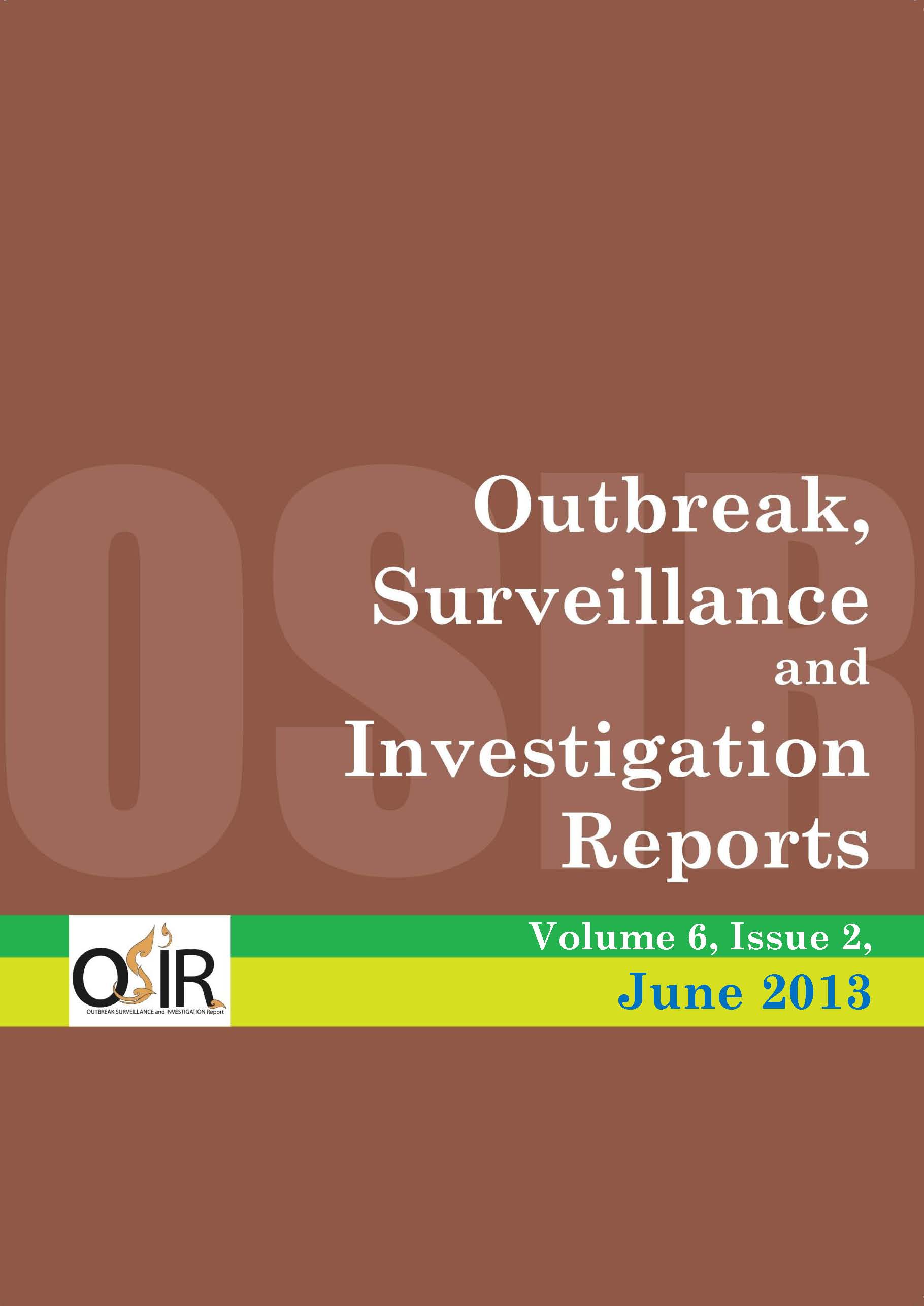Analysis of Rabies Surveillance Data (2008-2011) in Bali Province, Indonesia
DOI:
https://doi.org/10.59096/osir.v6i2.263335Keywords:
rabies, dog, human, surveillance, Bali, IndonesiaAbstract
Bali Province was historically free from rabies. The first human rabies case in Bali was confirmed in late 2008. By June 2010, rabies had spread to all districts, affecting 30% of villages with 133 human deaths reported. To describe rabies situation in Bali from 2008 to 2011, data on human deaths and animal surveillance were collected from provincial public health and livestock offices of Bali, and Disease Investigation Centre (DIC) in Denpasar City, Bali. A total of 443 dogs were tested for rabies by the DIC Denpasar. Of these, 29% were tested positive by Fluorescent Antibody Test (FAT). The highest proportions of positive sample were from dogs that bit human and dogs with clinical signs of rabies. Male dogs were 1.7 times more likely to have rabies than the female ones and unvaccinated dogs were 2.2 times more likely to be infected with rabies than the vaccinated dogs. To control rabies in Bali, a multi-ministerial coordination mechanisms at national and local levels were established. Prevention and control measures were implemented, including mass dog vaccination, surveillance, stray dogs depopulation and public awareness campaign. Mass dog vaccination and stray dogs depopulation targeting dogs with history of biting humans or clinical symptoms demonstrated success in preventing spread of rabies in Bali.
References
Rupprecht CE. A tale of two worlds: public health management decisions in human rabies prevention. Clin Infect Dis. 2004 Jul 15;39(2):281-3. Epub 2004 Jun 18.
Center for Food Security and Public Health. Rabies and rabies-related Lyssaviruses. November 2012. [cited 2013 Feb 6]. <http://www.cfsph.iastate.edu/Factsheets/pdfs/rabies.pdf>
Dodet B, Meslin FX, Heseltine E, editors. Proceedings of the 4th International Symposium for Rabies Control in Asia; 2001 March 5-9; Hanoi, Vietnam. Montrouge: John Libbey Eurotext, 2001.
World Health Organization. Strategic framework for elimination of human rabies transmitted by dogs in the South-East Asia region. New Delhi: World Health Organization, Regional Office for South-East Asia, 2012. [cited 2013 Feb 6]. <http://www.searo.who.int/entity/emerging_diseases/links/Zoonoses_SFEHRTD-SEAR.pdf>
World Health Organization. Strategies for the control and elimination of rabies in Asia. Geneva: World Health Organization, 2001. [cited 2013 Feb 6]. <http://www.who.int/rabies/en/Strategies_for_the_control_and_elimination_of_rabies_in_Asia.pdf>
Putra AAG, Gunata IK, Asrama IG. Dog demography in Badung District the Province of Bali and their significance to rabies control. Buletin Veteriner BBVet Denpasar. 2011 Jun;23(78):15-25.
Central Bureau of Statistics in Bali Province. Aggregate data by district/city of 2010 population census, Bali Province. Bali: Central Bureau of Statistics in Bali Province,2010. Indonesian.
Centers for Disease Control and Prevention. Epi Info 3.5.3. 2011. [cited 2013 Feb 6]. <http://wwwn.cdc.gov/epiinfo/html/downloads.htm>
Provincial Public Health Office of Bali. Presentation on rabies day: current situation of suspected rabies animal's bite and rabies case in human. Denpasar: Provincial Public Health Office of Bali, 2011.
Kienzle TE. Deadly diseases and epidemics: rabies. New York: Chelsea House Publications, 2007.
Panichabhongse P. The epidemiology of rabies in Thailand [dissertation]. New Zealand: Massey University. 2001.
Wandeler AI, Matter HC, Kappeler A, Budde A. The ecology of dogs and canine rabies: a selective review. Rev Sci Tech. 1993 Mar;12(1):51-71.
Downloads
Published
How to Cite
Issue
Section
License
Copyright (c) 2023 Outbreak, Surveillance, Investigation & Response (OSIR) Journal

This work is licensed under a Creative Commons Attribution-NonCommercial-NoDerivatives 4.0 International License.









